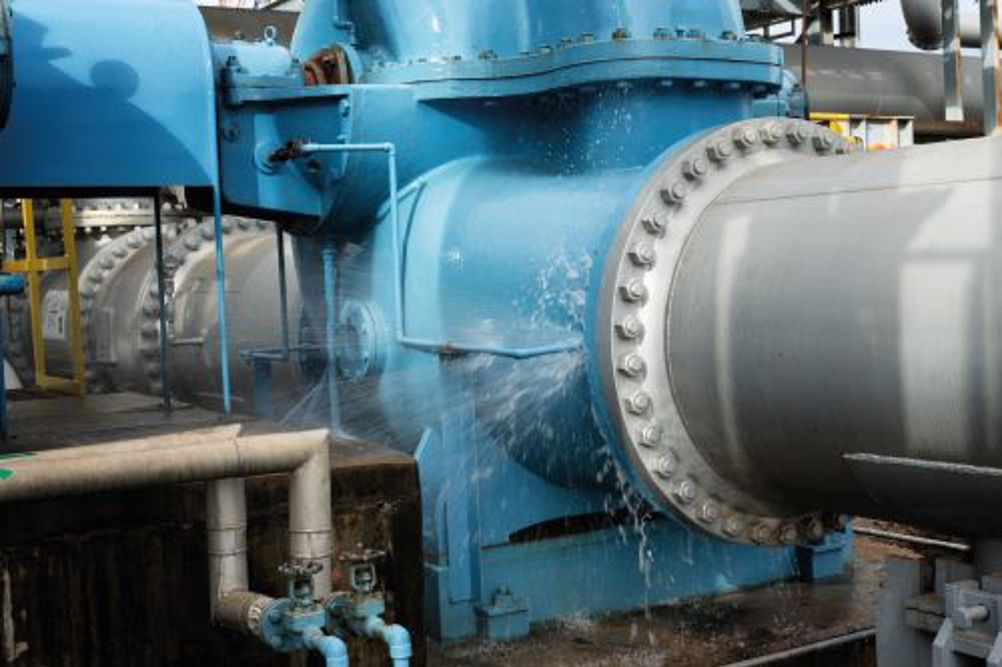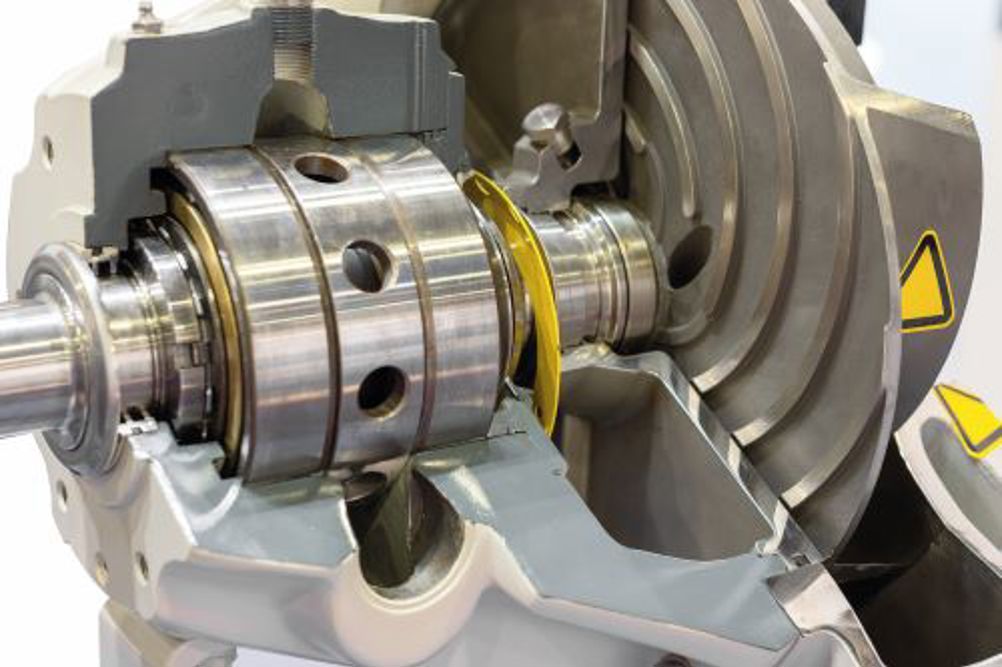Traditionally pumps were sealed with gland packing – a braided or twisted material such as graphite, PTFE or aramid fibres which prevent leakage around the shaft – a practice that continues to this day.
The problem with this is that the packing causes friction and needs to be flushed with large quantities of cold water to prevent overheating.
The friction also means the pumping operation is more energy intensive and the packing needs regular adjustment with regular maintenance a requirement to avoid equipment failure.
Mechanical seals also require cooling but the amount of leakage is lowered significantly producing considerable savings on downtime and maintenance.
An integral part of the pump, mechanical seals connect the rotating shafts of the pump with the stationary pump housing and are available as either single or double seals.
Frictional heat
A single mechanical seal has two flat surfaces pressed together by a spring. Between the surfaces is a fluid film from the pumped product (water can also be used) which reduces the risk of destructive frictional heat. The product then evaporates which is fine if there is no environmental risk associated. A double mechanical seal consists of a primary seal which keeps the product contained while the second seal prevents flush liquid from escaping into the environment. These seals are either arranged face to face or back to back depending on the nature of the media to be pumped.
Double mechanical seals are commonly used in the chemical industry where potentially hazardous leaks of corrosive materials such as acids, for example, have to be contained and in the food industry where abrasive or sticky media can cause issues. Bearings are protected from damaging fluid ingress and the non-contacting seal design means pumps shafts are also protected while power consumption is far less than seen in gland packing while product loss is minimal. However, with any seal, the risk of leakage remains and that can be damaging not just to the pump and surrounding equipment but to the area around it.

Production loss
Malik Durojaiye, field engineer, assembly services at US engineering services and equipment manufacturer Swagelok, says, “Any leak of hazardous material can lead to asset damage and environmental risk for operators working nearby.
Moreover, when the seal goes down, the pump will shut down, followed by failure of the entire process system, resulting in production loss.
“Pump seals dry or burn up due to operator error, resulting in heat-building fraction. If not addressed immediately, the hard seal faces can reach a very high temperature, resulting in burnt elastomer parts and leakage. Also, it is important to check the flatness of the mechanical seal faces. If the surface has scratches, it will not allow for a uniform fluid film and may result in leakage.”
To help avoid this happening, a seal support system can be used which supply either a gas or a liquid to the mechanical seal to prevent damage. These systems lubricate seal faces, control pressure and temperature, flush contamination and residue and prevent leakage. They are widely used in the oil and chemical sectors with the industry standard being the American Petroleum Institute (API) Standard 682.
Flush plan
A flush plan circulates fluid to or from the seal chamber, typically by means of tubing and fluid treatment devices. The fluid can be from the process itself using a bypass flush where it is circulated past the seal faces to carry away frictional heat and maintain a consistent temperature. If the pumped fluid is not suitable, then usually water can be used as an external flush which flows past the seal and into the pump. The amount of fluid should be monitored and controlled by installing a control valve, gauge and flow meter.
To avoid costly water wastage, a continuous loop water management system can be set up to constantly recycle seal flush water reducing waste to around one teaspoonful a day, in the form of vapor.
A more recent development in mechanical seals has been the introduction of cartridge construction. Seals are pre-assembled eliminating the need to measure and set spring compression while the seal faces are protected from damage during installation.
For example, Atlas Copco’s Weda D95 pump is used in heavily abrasive environments such as in the mining, tunnelling and construction sectors.
The mechanical seal is a stainless-steel single cartridge rather than many separate components and so it is easy to replace in one piece. This means that in highly challenging environments, the maintenance requirements are minimized with less costly downtime.

Sometimes the nature of the media being pumped – for example, acids, alkalis or ultrapure liquids – means any risk of leakage cannot be tolerated and even the best seals are not secure enough and pose too much of a risk.
Magnetic drive
Magnetic drive pumps have been developed to eliminate the risks of leaks altogether.
The pumped fluid is completely contained within the pump housing. There is no direct connection between the electric motor shaft and the impeller meaning no seal is needed and maintenance costs are significantly reduced.
These pumps use two sets of magnets. The first is attached to the shaft and drives the inner motor. As the motor turns on, the magnet spins, producing magnetic force. This then makes the magnet attached to the impeller spin and rotate the impeller which then drives the liquid in the pump.
While magnetic drive pumps are an ideal solution in many scenarios, there are several drawbacks. These include limited solids handling which can stick to the magnets and bearings, for example, affecting performance and potentially leading to failure. They are also sensitive to extreme operating conditions and hot temperatures. Dry running can also be very damaging as the pumped liquid acts as a lubricant and coolant. Without it, the pump can easily overheat and become damaged.

About the author
Andrew Smith is a freelance writer.
This article first appeared in the March/April 2024 issue of World Pumps magazine. To read the full issue, click here.




